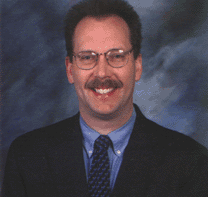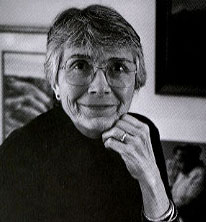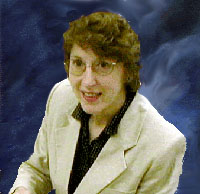Symposium
Participants
Dr. Linda Grimm,
an Associate Professor of Anthropology at Oberlin College, teaches courses in
archeology, physical anthropology, and museum studies.
Prof. Grimm is the project director and will serve as narrator of the
symposium as well as primary adviser for the two exhibitions that accompany this
project. A social scientist by
training, Prof. Grimm has been teaching courses and guiding student research in
museum studies for the past five years.
 |
Dr.
Steven L. Grafe, is an expert in the history and arts of the Columbia River
Plateau and a meticulous scholar whose knowledge and experience have been
essential to the realization of the symposium and gallery exhibition.
His persistent efforts to locate material missing from the original
Spalding inventory lie at the heart of this project.
He received his Ph.D. from the University of New Mexico in 1999 where his
dissertation focused on the origins of floral-design beadwork in the southern
Columbia River Plateau. He has
published numerous articles and exhibition reviews in such publications as the
American Indian Art Magazine, Oregon Historical Quarterly, and Pioneer Trails as
well as in edited collections.
|
 |
Mary Dodds Schlick holds a Masters of Science degree from Virginia Polytechnic
University, and is a widely recognized scholar whose expertise resides in the
area of basketry and weaving among native peoples of the Columbia Plateau.
She has many years experience living and working with native artists on
the Colville (1950-56), Warm Springs (1960-64) and Yakama (1969-75)
reservations. She has written the definitive book on the subject of Columbia
Plateau basketry (Schlick 1994, 2002) and continues to publish and lecture
regularly on this topic. Mrs.
Schlick is an adjunct curator of Native American Arts at the Maryhill Museum of
Art in Goldendale WA, a consultant to numerous museums in the Northwest on
Plateau native arts and curator of numerous exhibitions.
Her illustrated presentation will focus on the history and development of
flat-twined bags on the Columbia River Plateau and constitutes a specific
complement to the Allen Art Museum exhibition (see below).
In her talk she will show how changes in materials and designs reflect
the changing circumstances of Native American life and will demonstrate the
centrality of these crafts to Native American identity.
|
 |
Ms. Elizabeth Jane
Atack graduated from Oberlin College in 2001 with majors in anthropology and
archeological studies. Her archival
research made significant contributions to understanding the history of
Oberlin’s flat-twined bag and achieved a precise understanding of how and when
the bag became misplaced in the former Oberlin College Museum.
In addition to sharing some of the results of her research, she will talk
about the educational value of the project for undergraduate students of
anthropology, art history, and museum studies. |
Mr.
Roland Baumann, Archivist at Oberlin College provides bibliographical
instruction as well as direction on projects such as this one.
He has a Ph.D. in American History and has been archivist and adjunct
professor of history at Oberlin for 15 years.
He will use the detective work required by this project to show how
people are using archival records to make new discoveries and to use these
materials in innovative ways.
 |
Prof. Joyce M.
Szabo, Chair of the Dept. of Art and Art History at the University of New
Mexico, is a widely recognized scholar in the field of Native American art.
She was the first specialist to examine our flat-twined bag and to
provide an assessment of its authenticity.
Prof. Szabo is no stranger to Oberlin for she wrote her doctoral
dissertation on the famous Howling Wolf ledger book that is owned by the Allen
Memorial Art Museum. Her study, Howling
Wolf and the History of Ledger Art, was published by the University of New
Mexico Press in 1994. She is the
editor and a contributing author for Painters, Patrons, and Identity: essays
in Native American art to honor J. J. Brody, which was published by the
University of New Mexico Press in 2001. She
is one of the top experts in the field of Native American art and culture and
has numerous publications, catalogues and exhibitions to her credit.
She will chair the panel discussion on the repatriation of Native
American art and material culture. |
Also joining us are
two Nez Perce tribal members, Mr. Josiah Pinkham, the tribe’s
ethnographer, and Ms. Lynette Pinkham, an expert weaver.
Ms. Pinkham will demonstrate and discuss flat twined weaving techniques
in master classes for interested attendees.
Both Mr. Pinkham, and Ms. Pinkham will receive the bag and accompany it
on its journey home.
External
Reviewers
Dr. Sharon Dean
is the head of the Cultural Anthropology and Visual Arts Department at the
Cleveland Museum of Natural History and has had a long-term interest in the
"social life" of objects. She
is also an expert on Native American basketry and is a co-author of a book just
completed on Paiute and Shoshone baskets of the Owens Valley, California.
Dr. Joshua
Piker (OC’89) is an Assistant Professor at the University of Oklahoma with
a specialty in Native American and Colonial History.
His publications have appeared in Ethnohistory and Reviews in
American History,
and he is completing a book on the eighteenth century Creek Indian
community of Oakfuskee.